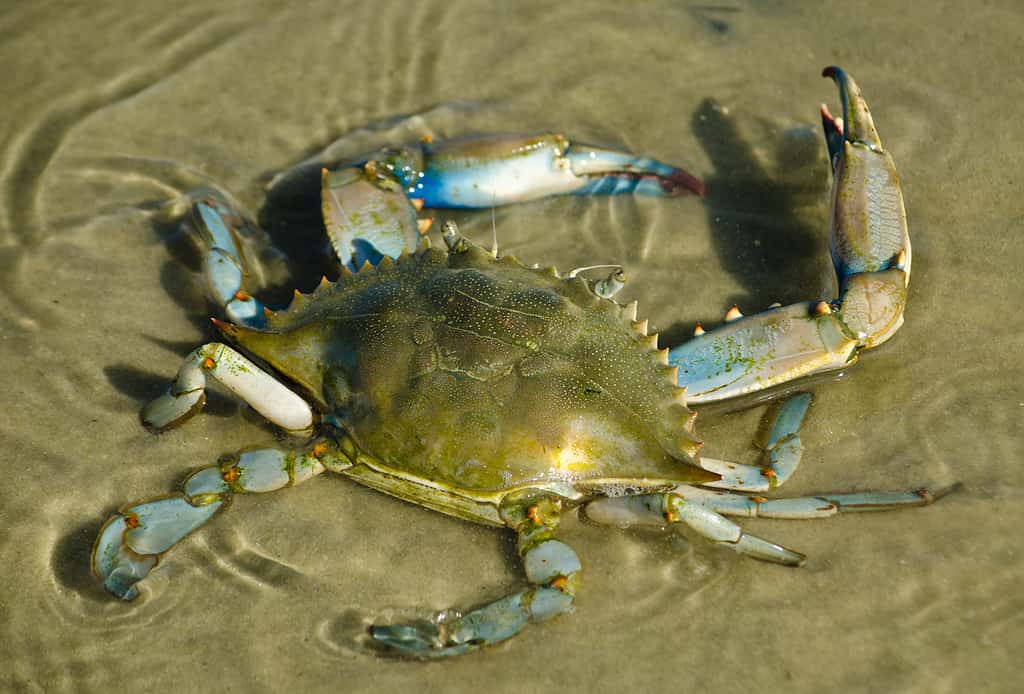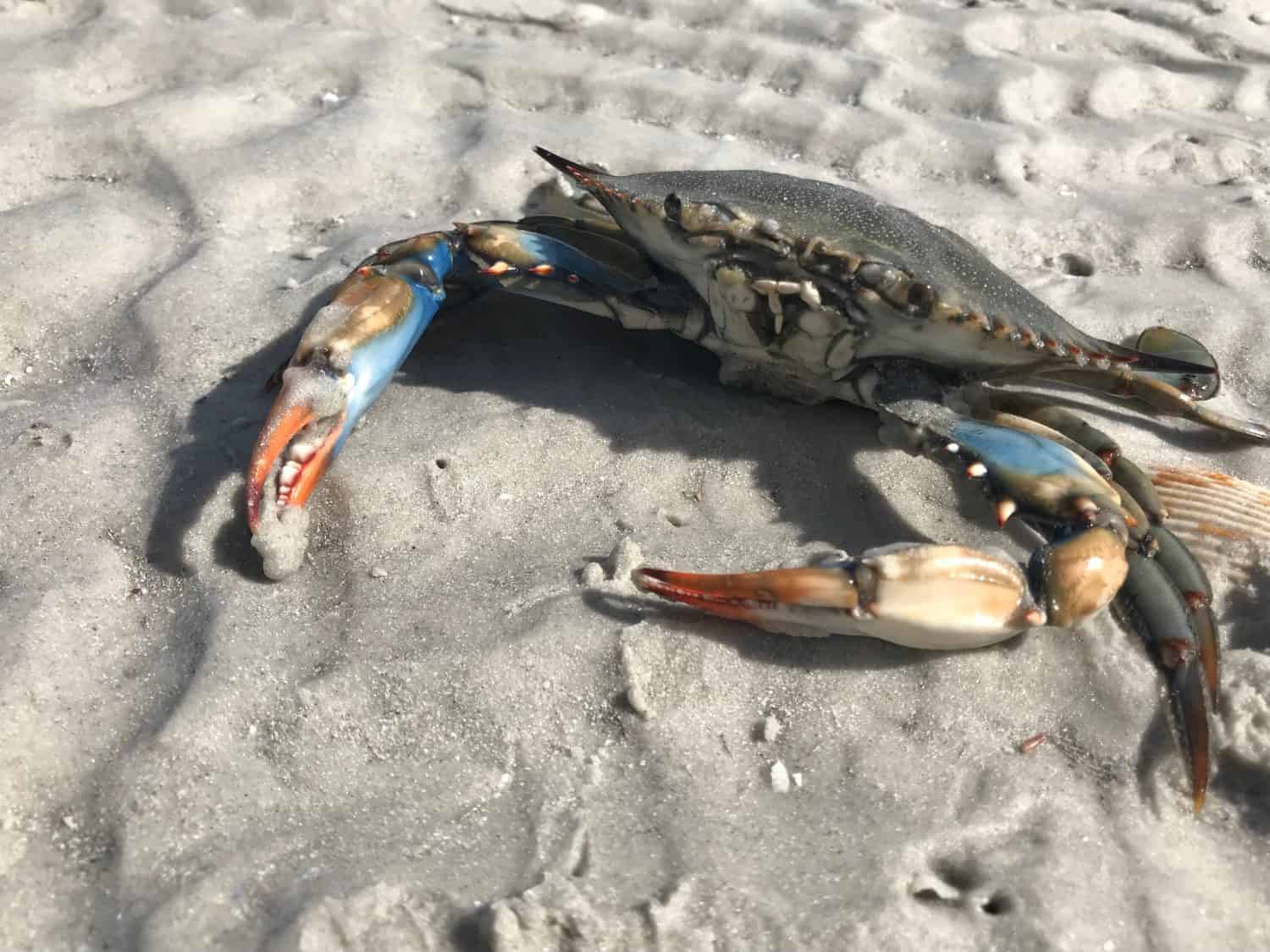Crabbing season is a popular time of year for many people across the globe. However, Florida residents, in particular, are passionate about this hobby, and both experienced anglers and amateurs alike set out to the coastlines to fill up their nets and traps. Although this can be an exciting season, it’s important to know the regulations surrounding this activity before diving in.
Certain locations throughout the state may limit when individuals can trap, the types of traps used, and the amount of crabs captured. Let’s discuss when fishermen in Florida can hunt crabs throughout the year, what daily bag limits are like, and explore other important rules you may not have known about.
When Does Crabbing Season Start in Florida?

In the wild, a blue crab will typically live to be between one and three years old. However, some blue crabs can live for much longer, and a few have reached eight years of age.
©MeliaMuse/iStock via Getty Images
Typically, crabbing season in Florida takes place during the summer and early fall months. However, blue crabs and blue land crabs are present along the coastlines of this state all year long. Trappers must refrain from hunting blue crabs during closed seasons, and Biscayne National Park has special regulations surrounding these animals. Similarly, harvesting blue land crabs is prohibited from July 1st to October 31st.
It is only legal to harvest stone crabs in Florida between October 15th and May 1st each year. Unlike blue crabs and blue land crabs, trappers are only permitted to harvest their claws as opposed to their whole body. Although this might sound deadly, removing the claws of a stone crab is far from fatal. In fact, these animals regenerate their missing limbs over the course of several molts. This allows their populations to remain stable while providing fishermen with a wealth of opportunities to harvest their meat. However, fishermen are encouraged to only harvest one claw per crab, as taking both greatly decreases their chances of survival when released.
Crabbing Bag Limits in Florida

Female stone crabs are able to lay millions of eggs throughout the course of their life.
©Ami Parikh/Shutterstock.com
According to the Florida Fish and Wildlife Conservation Commission, there are three primary species of crabs available to catch off Florida coastlines: blue crabs, blue land crabs, and stone crabs. While there is no size limit restriction for blue crabs and blue land crabs, stone crabs must have claws at least 2 7/8 inches long in order to harvest them. As stated above, only the claws of these crustaceans may be harvested and the main body of the crab must be released. The capture of female crabs is permissible but largely frowned upon. However, catchers must take care to check their traps for egg-bearing females before bringing them home. Fishermen must release pregnant females back into the wild to help sustain crab populations.
Daily bag limits differ for each crab species. Recreational trappers can catch up to 10 gallons of blue crabs per day. On the other hand, they are only allowed 20 individual blue land crabs per day. As stated above, stone crabs may never be harvested whole. Each trapper can harvest up to one gallon of their claws per day.
Things to Keep in Mind While Crabbing in Florida

Crab meat is healthy and delicious, making this meal a win-win.
©Katarina_G/Shutterstock.com
Every person aged 16 or older who plans to catch crabs in the state of Florida must register their traps online before heading out. For those interested, you can sign up on Go Outdoors Florida’s website. The information collected from recreational fishermen and their traps helps wildlife authorities determine future bag limits. Registering your traps helps ensure that crab populations stay stable. Because of this, Florida fishermen will be able to enjoy this hobby for years to come.
Certain trap specifications have been put in place to regulate Florida crabbing more closely. For example, recreational fishers must have no more than five traps per person in the water at any given time. In addition, the size and functionality of each trap must meet certain standards set by the local wildlife authority. Appropriate trapping locations and harvest time may vary from place to place throughout the state. For more information about this, visit the Florida Fish and Wildlife Conservation Commission’s website. This video from the YouTube channel Woods2Table is also a helpful resource:
Final Thoughts
Florida residents have been participating in the hobby of crabbing for decades. However, as time goes on, rules and regulations surrounding this activity continue to transform. Because of this, it’s important for individuals to stay up-to-date on these recent changes to ensure they comply with the Florida Fish and Wildlife Conservation Commission. Check their website to ensure that you have all the information you need before heading out on your first crabbing trip of the season.
Thank you for reading! Have some feedback for us? Contact the AZ Animals editorial team.








